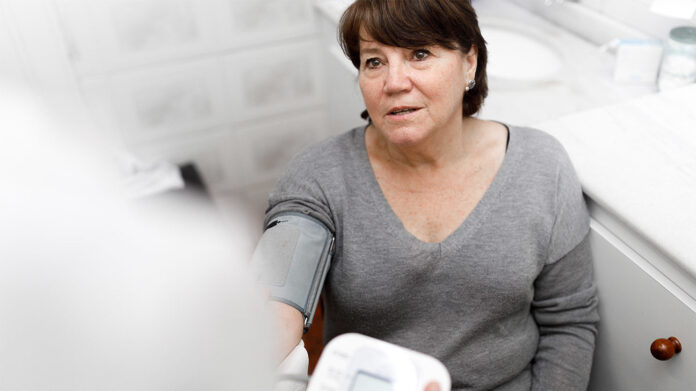Over 100 million U.S. people or half of all adults have hypertension, however, a recent survey suggests that not all Americans are up to speed with the basics of blood pressure.
In a recent survey conducted this year by the American Heart Association and the American Medical Association, researchers found that almost 80 percent of adults who have high blood pressure aren’t checking it often enough. And more than half of Americans don’t know what constitutes a high blood pressure number.
According to the American Heart Association, it’s important to check your blood pressure daily (at the same time each day) if you have high blood pressure.
“Hypertension causes more death and disability than any other disease process and we are lucky that it can be controlled with generic medications in routine care settings,” says Dr. Joshua A. Beckman.
Currently, the widely-accepted definition of high blood pressure is considered 130/80 mmHg. However, 64 percent of Americans can’t identify what constitutes an elevated or hypertensive blood pressure number.
Of the overall population surveyed — those with high blood pressure and those without — an overwhelming 55 percent of people at high-risk stated that they weren’t worried they were at risk for a heart attack.
Of those who were diagnosed with high blood pressure, 36 percent didn’t worry about having a heart attack — something that affects 735,000 Americans every year according to the Centers for Disease Control and Prevention (CDC)Trusted Source.
Hypertension has been labeled as the “silent killerTrusted Source,” because many times, it doesn’t manifest with any symptoms until it causes a significant health problem.
“Most of the time high blood pressure has no obvious symptoms to indicate that something is wrong,” according to Sondra DePalma.
She continued that “the very nature of high blood pressure is the reason it’s often considered unimportant.” Because blood pressure is often asymptomatic, many people don’t find themselves checking it on a regular basis or paying much attention to it.
This study went on to find that in those people who have high blood pressure, 4 out of 10 didn’t know what their last blood pressure reading was.
Although high blood pressure is something that’s seen beyond adolescence, Beckman believes that early awareness is the key to prevention.
“Public education about risk factors for cardiovascular disease, including high blood pressure, smoking, diabetes, and cholesterol, should be taught in high school as these problems are common in the United States and greatly affected by day-to-day lifestyle choices.”
This article addresses the very prevalent education gap that exists within blood pressure. As stated, a staggering number of people suffer from high blood pressure and many of those who do are often unaware. One of the main reasons people are not as aware of the issue or are unconcerned with it is because most of the time hypertension is asymptomatic. It is difficult to get people to measure their blood pressure continuously if they are not receiving any physical effects of their condition. Which means it is even harder to get people who are undiagnosed to do the same. Education on lifestyle choices that can help manage blood pressure can help influence people’s ways of managing their heart health even if they are not continuously monitoring their blood pressure.
This article is important because it explains how important accessibility and ease of use is when considering a solution. A proposed design solution needs to be something that does not require much effort from individuals or is incorporated into existing daily routines.




